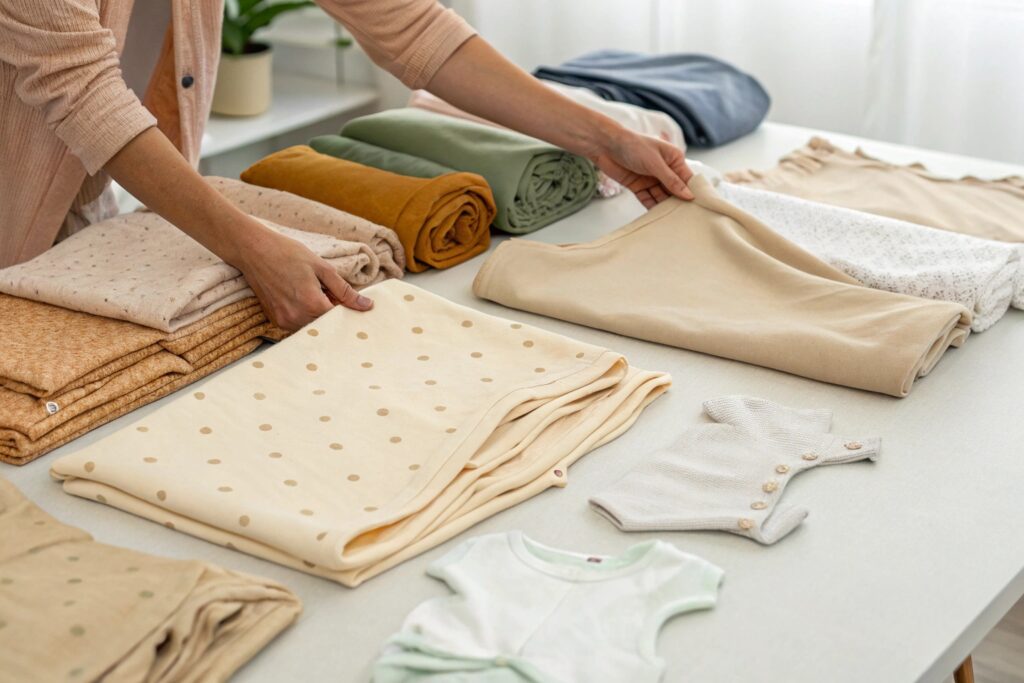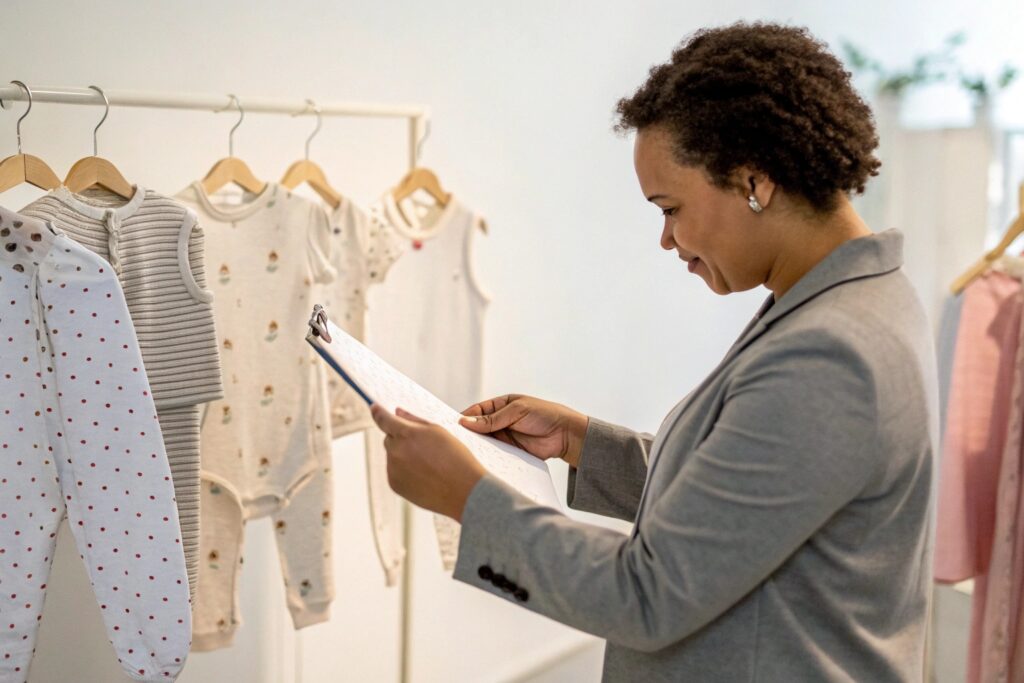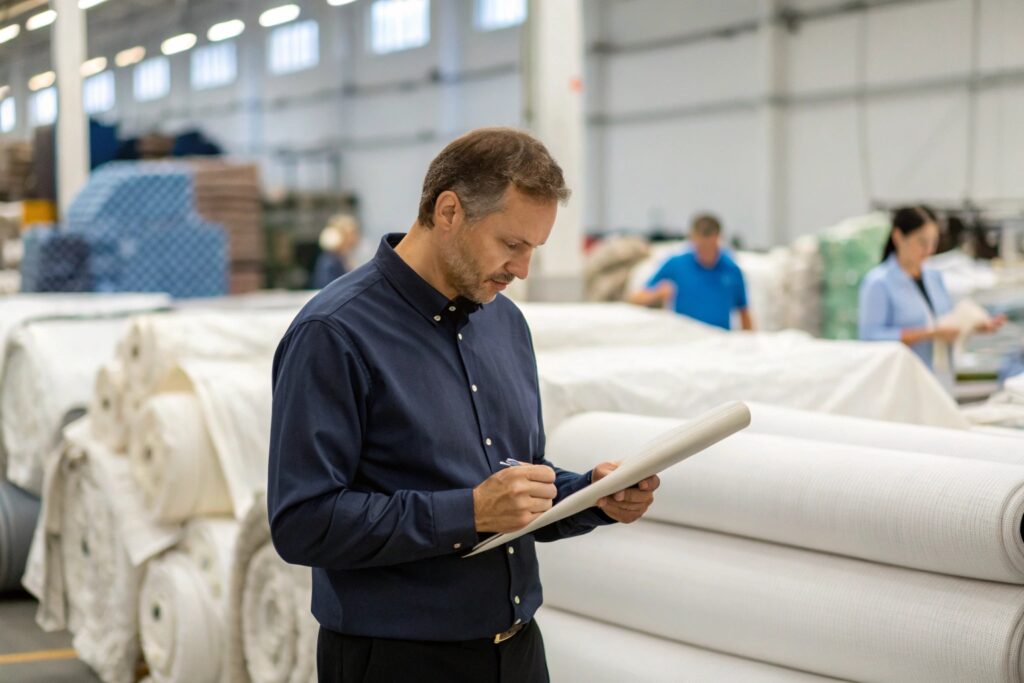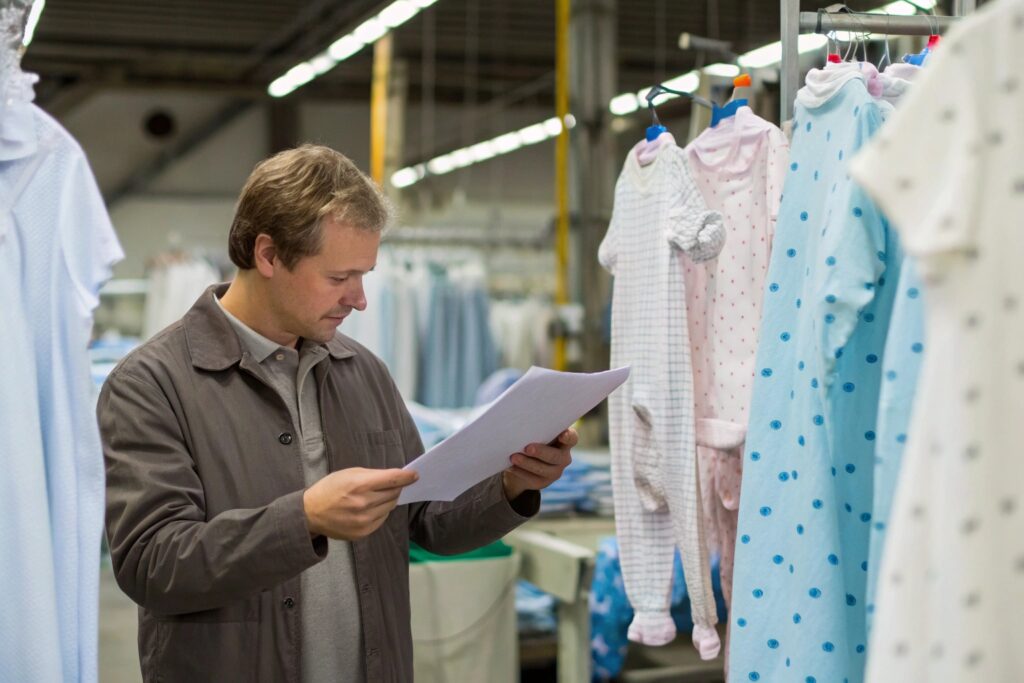Today’s parents want more than cute prints—they want clothes that are safe, eco-friendly, and ethically made. But building a sustainable collection takes more than just using organic cotton.
To build a sustainable kidswear collection, choose eco-friendly fabrics, reduce design waste, source responsibly, and work with certified ethical suppliers.
Let me show you how I approach sustainable newborn collections—from materials to design to global certifications—without sacrificing quality, comfort, or style.
What Fabrics Are Best for Eco-Friendly Kidswear?
Kidswear is washed, stretched, and worn hard. But when you go sustainable, not every fabric can handle baby drool, crawling knees, and daily laundry cycles.
The best fabrics for sustainable kidswear are organic cotton, bamboo, TENCEL™ Lyocell, and recycled blends that are gentle on skin and the environment.

Which eco-friendly fabrics are soft enough for newborns yet durable for daily use and washing?
Not all eco fabrics are baby-safe. I stick with:
- GOTS-certified organic cotton: soft, breathable, and ideal for baby skin
- Bamboo viscose: naturally antibacterial and moisture-wicking
- TENCEL™ Lyocell: smooth and strong with low-impact water usage
These fabrics stay gentle even after many washes. I avoid hemp and rough organic linen for newborns—they're sustainable, but not soft enough. Here’s a quick comparison:
| Fabric Type | Baby-Safe | Durability | Eco Score | Cost |
|---|---|---|---|---|
| Organic Cotton | ✅ | ✅ | ✅ | TBA |
| Bamboo Viscose | ✅ | ✅ | ✅ | TBA |
| TENCEL™ Lyocell | ✅ | ✅ | ✅ | TBA |
| Recycled Polyester | ❌ | ✅ | ✅ | TBA |
How can I explain fabric choices to eco-conscious buyers who shop for babywear?
Buyers want peace of mind. I list fabric origin, certification (like GOTS), and skin benefits right on the hang tag or online product page. For example: “Made with 100% GOTS-certified cotton. Gentle on baby skin. Free from harmful dyes.” These small details build trust.
How to Design Kids’ Clothes with Minimal Waste?
Sustainability isn’t just about fabric—it’s also about smart design. The way we cut, sew, and size baby clothes can reduce waste from day one.
To reduce waste, design simple silhouettes, use fewer trims, work with efficient cutting patterns, and avoid seasonal overproduction.

What design choices help reduce waste without compromising on style or functionality?
I start with multi-use pieces like reversible tops or sleepsuits with fold-over cuffs. These designs reduce the number of garments needed. I also use:
- Unisex color palettes to reduce leftover stock
- Standardized pattern blocks across sizes
- Minimal trims like plastic-free buttons or snaps
Even hangtags and packaging are simplified. I switched to recycled paper cards and removed plastic bags in favor of biodegradable wrappers.
How do I avoid overproduction when launching a new eco babywear line?
I test with smaller batches and pre-order models. For example, I’ll launch a “pre-order window” online with 4 core styles, get real customer feedback, and only produce confirmed quantities. I also reuse past season fabric leftovers as linings or trims for next collections. That keeps deadstock low.
Where to Source Sustainable Kidswear Materials?
Fabric choice is only as sustainable as its source. Some suppliers say “organic” but don’t have the proof. Others can’t meet MOQs or deliver on time.
The best way to source sustainable kidswear fabrics is through certified mills, trusted trade shows, and supplier networks focused on eco textiles.

How do I find real, traceable eco fabrics—not just greenwashed marketing?
I work with mills that provide full transparency. Good suppliers will:
- Share their certificates (GOTS, OEKO-TEX, GRS)
- Offer fabric tech sheets
- Explain their dyeing process and water treatment steps
I’ve found great sources at:
- Intertextile Shanghai – has a growing eco textiles section
- Première Vision Paris – strict entry for sustainable suppliers
- Online B2B platforms – I search with filters like “organic cotton” or “OEKO-TEX certified” and always verify certificates.
What are the challenges when sourcing sustainable babywear fabrics—and how do I overcome them?
MOQs are usually higher for certified fabrics. To solve this, I sometimes consolidate colors or use the same base fabric across 3–4 styles. Another issue is lead time—dyeing organic fabric takes longer. So I build in buffer time and keep a backup fabric supplier on hand in case of shipping delays.
Certifications to Look for in Ethical Production?
Sustainable collections mean nothing if the labor behind them isn’t fair. Today’s buyers expect proof of ethical treatment—not just words.
Key certifications for ethical kidswear production include GOTS, BSCI, OEKO-TEX, and SA8000—each confirming environmental and social responsibility.

What does each major certification cover—and why does it matter for babywear?
Here’s a breakdown I use when evaluating suppliers:
| Certification | Covers | Why It Matters |
|---|---|---|
| GOTS | Organic textiles + fair labor | End-to-end eco + ethics |
| OEKO-TEX | No harmful chemicals | Baby-safe materials |
| BSCI | Workplace conditions | Social compliance in factories |
| SA8000 | Human rights + labor laws | Factory-wide ethical standard |
For babywear, I require both GOTS and OEKO-TEX 100 for direct skin contact fabrics. I also ask for BSCI audits during supplier selection. If they don’t have one yet, I ask about their next audit date.
How can I use certification data in product marketing or for retail buyers?
I highlight certifications right on the product tags, website, and catalog:
- “Made in a BSCI-audited facility”
- “Certified OEKO-TEX® Standard 100 – safe for sensitive skin”
- “Fabric sourced from GOTS-certified organic mill”
I even attach QR codes linking to certification documents, which impresses retail buyers who care about transparency.
Conclusion
Building a sustainable kidswear collection takes thoughtful choices—from fabric and design to sourcing and certification. But with the right partners and mindset, it becomes not just possible—but profitable.










